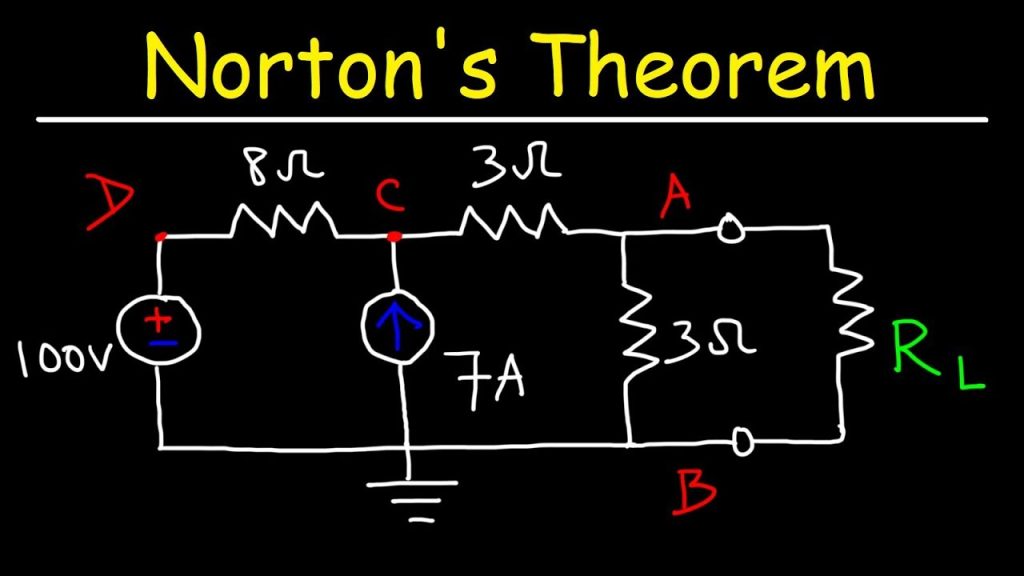Nortons theorem is an analytical method used to change a complex circuit into a simple equivalent circuit consisting of a single resistance in parallel with a current source
Norton on the other hand reduces his circuit down to a single resistance in parallel with a constant current source.
Nortons Theorem states that “Any linear circuit containing several energy sources and resistances can be replaced by a single Constant Current generator in parallel with a Single Resistor“.
As far as the load resistance, RL is concerned this single resistance, RS is the value of the resistance looking back into the network with all the current sources open circuited and ISis the short circuit current at the output terminals as shown below.
Nortons equivalent circuit

The value of this “constant current” is one which would flow if the two output terminals where shorted together while the source resistance would be measured looking back into the terminals, (the same as Thevenin).
For example, consider our now familiar circuit from the previous section.

To find the Nortons equivalent of the above circuit we firstly have to remove the centre 40Ω load resistor and short out the terminals A and B to give us the following circuit.

When the terminals A and B are shorted together the two resistors are connected in parallel across their two respective voltage sources and the currents flowing through each resistor as well as the total short circuit current can now be calculated as:
with A-B Shorted Out

If we short-out the two voltage sources and open circuit terminals A and B, the two resistors are now effectively connected together in parallel. The value of the internal resistor Rs is found by calculating the total resistance at the terminals A and B giving us the following circuit.

Find the Equivalent Resistance (Rs)

Having found both the short circuit current, Is and equivalent internal resistance, Rs this then gives us the following Nortons equivalent circuit.
Nortons equivalent circuit

Ok, so far so good, but we now have to solve with the original 40Ω load resistor connected across terminals A and B as shown below.

Again, the two resistors are connected in parallel across the terminals A and B which gives us a total resistance of:

The voltage across the terminals A and B with the load resistor connected is given as:

Then the current flowing in the 40Ω load resistor can be found as:

which again, is the same value of 0.286 amps, we found using Kirchhoff´s circuit law in the previous tutorials.
Nortons Theorem Summary
The basic procedure for solving a circuit using Nortons Theorem is as follows:
· 1. Remove the load resistor RL or component concerned.
· 2. Find RS by shorting all voltage sources or by open circuiting all the current sources.
· 3. Find IS by placing a shorting link on the output terminals A and B.
· 4. Find the current flowing through the load resistor RL.
In a circuit, power supplied to the load is at its maximum when the load resistance is equal to the source resistance. In the next tutorial we will look at Maximum Power Transfer. The application of the maximum power transfer theorem can be applied to either simple and complicated linear circuits having a variable load and is used to find the load resistance that leads to transfer of maximum power to the load.


